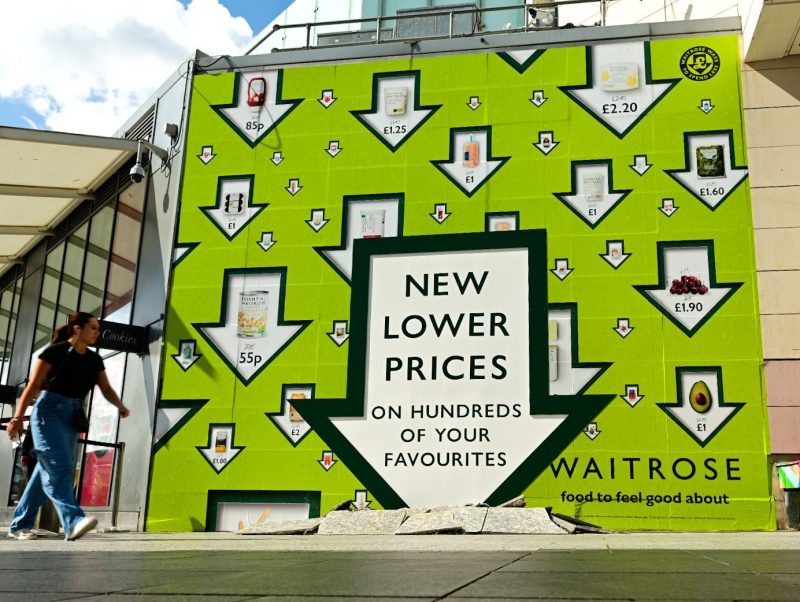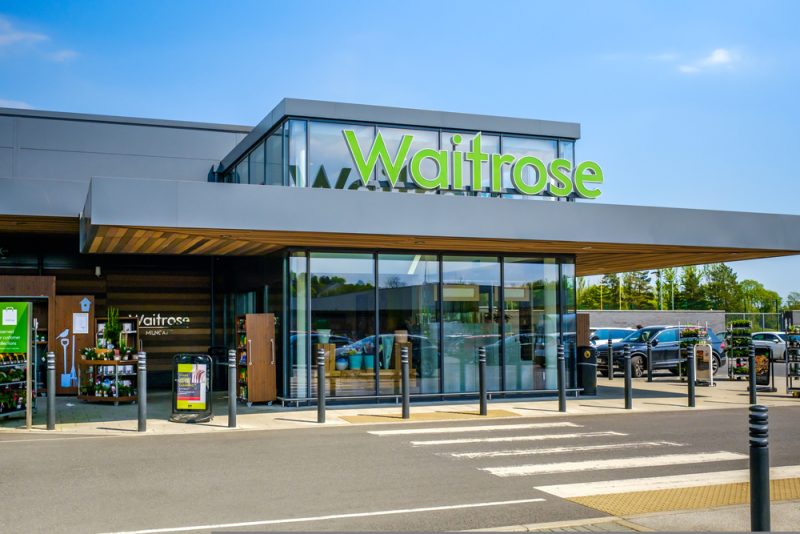Yesterday marked a step forward for Waitrose as it reported annual profits up £170m to £1.064bn and sales up 5% to £7.7bn.
Executive director James Bailey says the “strong and improving cash flow means we can now kickstart a record investment plan in the business”.
However, the past year hasn’t been an easy ride for the upmarket retailer, having suffered blows in volume and market share at the same time its parent company the John Lewis Partnership warned of job cuts and no staff bonus.
But with performance improving and a plan in place, is it finally turning a corner?
Across the year, overall volumes were down 1.5% at Waitrose as the grocer lost market share at a time when upmarket rival M&S continued to grow at pace.
While GlobalData senior retail analyst Eleanor Simpson-Gould describes the retailer’s performance this financial year as “significantly” better than the previous year, she says Waitrose “fell short of recent competitor performances, resulting in an estimated market share decrease of 0.3 percentage points to 3.4% for 2023”.
Waitrose was slow off the blocks in investing in value amid the cost-of-living crisis. M&S, for example, had a headstart as it had started to invest in boosting its value credentials before the cost of living started to rise, relauching its Remarksable Value line back in 2019.
However, Simpson-Gould notes that Waitrose’s ‘New Lower Prices’ campaign that launched in February last year, might “finally be paying off” with the grocer reporting volume uplift for the grocer in the final four months of the financial year.

Indeed, Bailey points out that overall market share has now started to improve and highlights that it attracted 1 million new shoppers last year.
“That pendulum has swung, and we’ve got great momentum going forward” he says.
Independent retail analyst Nick Gladding says that “being sharper on price will be key to winning back market share.”
He agrees that the Lower Prices campaign is “a step in the right direction to encourage more shoppers to do a fuller shop with the retailer.”
However, Gladding says that ultimately, Waitrose’s focus should be on “impressing customers each time they visit stores or receive a delivery so that they don’t feel the need to use a competitor.
“Waitrose remains an aspirational brand, but with stronger competition from M&S in the premium segment and with trading momentum from Sainsbury’s and Tesco, it will have to work harder to build market share.”
While the cost-of-living crisis has seen shoppers switch to cheaper supermarkets and opting for more affordable, own-label lines in a bid to save, Bailey says that as inflation starts to ease, Waitrose has begun to see customer behaviour shift back.
He explains that while shoppers are still being “careful, buying on promotion and using the My Waitrose voucher scheme”, Waitrose is starting “to see a shift into those more considered purchases, higher quality items and the better sourced products that Waitrose stands for”.
“We are very optimistic about that market for customers and demand in the future.”
The grocer’s increased profits was driven by the early stages of its productivity strategy, which involved “renegotiating improved long-term deals with our key suppliers, redesigning our store processes and investing in technology,” says Bailey.
However, he adds that it is “just the beginning of our journey on reshaping a more efficient and fast-moving Waitrose”.
As part of its turnaround plan, owner John Lewis Partnership is entering a year of “significant” investment with £542m to be used to modernise its technology and refresh its stores.
Across Waitrose specifically, it plans to open new stores in areas where the brand is underserved. It will also refurbish 80 existing stores over the next three years.
The new sites, which will be a mixture of supermarkets and convenience stores, mark the first time in nearly a decade that Waitrose has developed a pipeline of new shops.

Bailey reveals that Waitrose is currently testing the new store format in areas including Sudbury.
“There are all sorts of changes involved,” he explains, including “making the shops brighter and lighter, more engaging for customers, revamping and doubling down on our counter and our service proposition”.
Gladding says: “Improving the shopper experience should be a priority for Waitrose.
“Too many of its stores are looking tired and suffering from under investment, particularly in comparison to a revitalised M&S. The shopping environment and the service provided matter hugely for a premium grocer to maintain the loyalty of regular shoppers and win back those that have defected to competitors.”
Simpson-Gould adds: “With a convenience focus growing among major grocers, the partnership would do well to ensure additions to its store portfolio include formats catering to time-poor consumers but remain near its core demographic of affluent shoppers.”
Waitrose will also be investing in “product quality, innovation and price”. Earlier this year, the grocer invested £30m to cut prices on hundreds of own-brand products, and Bailey says that it will continue to invest in price.
He says: “Price will always be part of our consideration and we’ve got money in our plan to keep investing in value for our customers for the next four years.”
While Waitrose still has work to do, its – some might say, long overdue – investment into stores, price and products will certainly give it a push in the right direction and help it not only retain its existing customers but also win new shoppers.